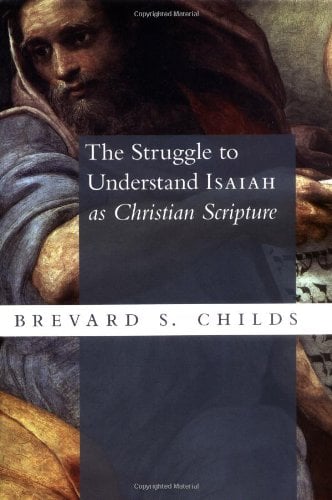Child’s treatment of the history of interpretation after Calvin is necessarily much more succinct, presumably because it is more readily available and familiar to the reader. He begins with Hugo Grotius (1583-1645) and his critiquer or rebutter Abraham Calov (1612-86). Grotius was a gifted linguist and classics expert and had a very good knowledge of Hebrew and Syriac. He largely achieved his goal to provide annotations on the whole Bible, including Isaiah. Childs says his most important contribution was establishing the precise meaning of words and phrases, appealing directly to the Hebrew text compared with Greek translations and Jewish targums. He was very critical of the Vulgate renderings of the Hebrew.
Grotius was especially commited to understanding the OT in its historical context, and did not privilege or rely on the history of Christian interpretation of it. In other words, he broke with the Christian tradition of interpretation and sought to give an objective reading of the text’s meaning, and this also meant he disregards appeals to how the NT writers used the OT. By contrast Abraham Calov was a representative of Lutheran dogmatic orthodoxy. And he set out to refute Grotius often line by line.
For example, in the interpretation of Is. 7.8, Grotius thinks the text must be emended to say 6 years not 65 years to preserve the text from historical error. This correlates better with 2 Kngs. 17.3-6. Calov will have none of it. He argues the text has been preserved uncorrupted, and that the traditional way of harmonizing things should be returned to. For example, in dealing with Is. 6 and John 12.41 Calov says Isaiah saw Christ himself, whereas Grotius suggests he saw a flash of lightning. Calov even attacks Calvin for downplaying a Christological reading of Isaiah 6.
A good example of the contrast can be seen in the two men’s differing interpretations of Is. 2.2-4. Grotius takes this to refer to after Jerusalem was delivered from the siege of Rezin, Calov understand it to be an eschatological prophecy concerning the last days with the gathering of the nations to Zion under the rule of Christ and the universal peace he will bring then. Or again, Grotius identifies the child in Is. 9.6 and 11.1 with Hezekiah, Calov with Christ. Calov is concerned to deny any partial fulfillments of these prophecies in OT times. Grotius suggests that literally the child of Is. 7 refers to a child of Isaiah himself, but ‘mystically’ it can be seen to refer to Christ, or in Is. 53 this may refer to Jeremiah, but mystically to Christ. Calov rejects this totally, asking how one can have a mystical sense that contradicts the literal sense?













